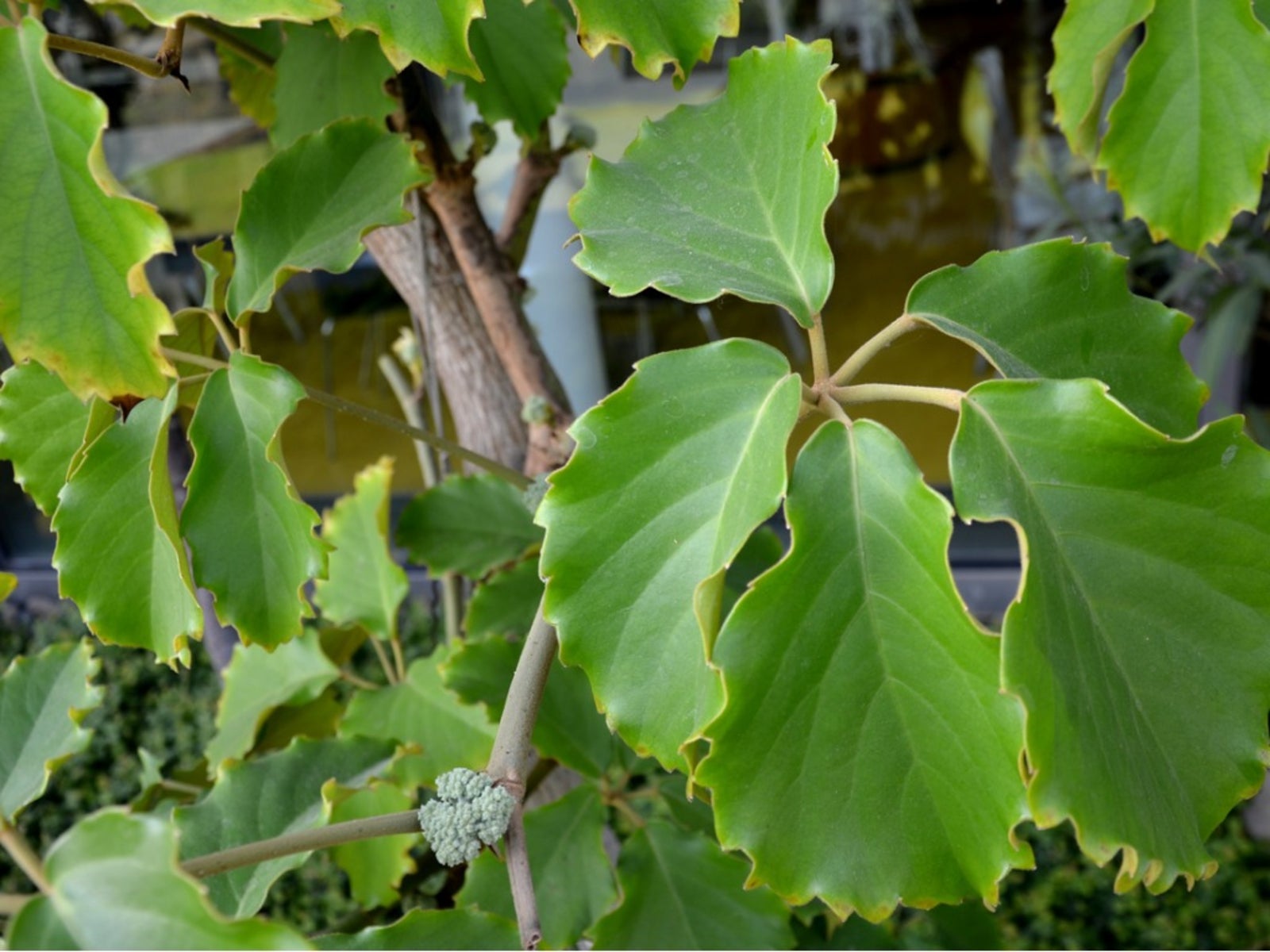Tetrastigma Voinierianum Info: Growing Chestnut Vine Indoors

If you want to bring a little bit of the tropics into the house, growing chestnut vine indoors may be just the ticket. Read on to learn more about how to grow Tetrastigma chestnut vines inside.
Tetrastigma Voinierianum Info
Tetrastigma voinierianum info tells us that this plant is native to Laos and can be found under the names chestnut vine houseplant, wild grape, or lizard plant. A rampant climber, chestnut vine may grow a foot (30 cm.) or more in a month in ideal conditions. A member of the Vitaceae family, chestnut vine is a vigorous climber with lush foliage and 8 inch (20 cm.) or longer tendrils. The tendrils are for climbing purposes, allowing the vine to wind its way up the trunks of trees. The underside of the leaves have clear pearl-like bumps, which are actually plant secretions that are used by ant colonies when grown in its wild habitat.
How to Grow Tetrastigma Chestnut Vines Indoors
Chestnut vine houseplant can be difficult to obtain for cultivation but are well worth the effort. If you know of someone that is growing chestnut vine indoors, ask for a cutting. Chestnut vine is easily propagated from cuttings of young shoots, provided there is sufficient humidity. Stick the young cutting in a well-draining aerated mix of potting soil mixed with peat or perlite. Situate the cuttings in a warm room with high humidity. Some of the cuttings may not make it. Chestnut plant is a little picky and it is often trial and error to attain exactly the correct conditions for growth. Once the plant gets established, however, you will be sure to love it and it will definitely acclimate to become a rapid grower.
Chestnut Vine Plant Care
Once chestnut vine has established, keep it far from the heater, and do not move it around in the home. Chestnut vine will grow in a well lit room or even in the shade, but not in direct sunlight. It will do beautifully in office settings, as it adores the warm temperatures and fluorescent lighting. Maintain at least a room temperature of 50 F. (10 C.) or above, ideally. Chestnut vines abhor the cold and the foliage will even blacken near a chilly window. The most difficult part of chestnut vine plant care is in regards to humidity, which should be high. Low humidity conditions will result in leaf drop, as will too little water. A proper watering schedule may, again, require some trial and error. Too much water will cause the new shoots to drop and too little, well, the same. Water moderately, letting the water flow from the bottom of the container and allow the soil to dry between irrigations. Do not let the plant sit in standing water or the root system will likely rot. Fertilize chestnut vine during the growing season, monthly during the winter months. The plant can be pruned aggressively to restrain its size and create a bushier specimen. Or, you may decide to give it its head and train the shoots to grow around the room. Repot chestnut vine once a year in the spring.
Gardening tips, videos, info and more delivered right to your inbox!
Sign up for the Gardening Know How newsletter today and receive a free copy of our e-book "How to Grow Delicious Tomatoes".

Amy Grant has been gardening for 30 years and writing for 15. A professional chef and caterer, Amy's area of expertise is culinary gardening.
-
 Grow ‘Karl Rosenfield’ Peony Plants For The Ultimate Frilly Border Beauties And Cut Flowers
Grow ‘Karl Rosenfield’ Peony Plants For The Ultimate Frilly Border Beauties And Cut FlowersFor frilly double magenta peony petals infused with a heady fragrance, grow ‘Karl Rosenfield’ peony plants. Here’s how to cultivate the ultimate plushy blooms
By Tonya Barnett
-
 10 Common Composting Problems That Can Spoil Your Garden Gold – Plus Easy Fixes
10 Common Composting Problems That Can Spoil Your Garden Gold – Plus Easy FixesLearn how to troubleshoot common composting issues before they ruin your stash – from bad smells and bugs to materials not breaking down as they should.
By Susan Albert